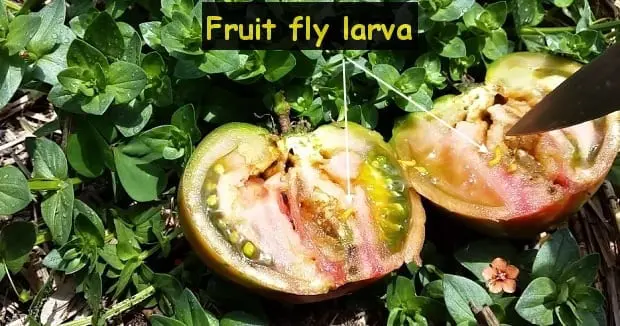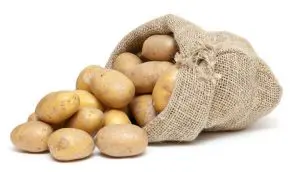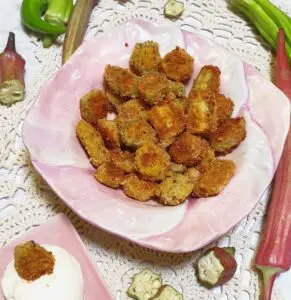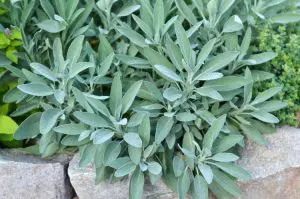So it’s the dreaded fruit fly season in Queensland Australia (where I live) and unfortunately it coincides with our best growing seasons being spring and early summer – that’s no surprise I guess. However, what does surprise me is how much fruit actually survives the sting of the fruit fly.

Queensland fruit fly preparing to sting cucumber (image above)
Don’t get me wrong fruit fly attack on your produce can be devastating but spraying toxic chemicals around the vegetable garden and fruit trees is much worse than maggots in produce! As insidious as this awful pest is, the fruit fly is by no means the perfect pest as some would make it out to be and often fruit grown in fruit fly infested areas do not get stung and of the fruit that do get stung not all are lost.
For the past 10 years I’ve grown larger varieties of tomatoes in our fruit fly infested surroundings with great success and without a net or spray in sight! We have oranges, lemons, limes, mandarins, and several other citrus trees, which fruit profusely and never get stung or if they do the fruit fly maggot rarely survive. There is one exception regarding citrus types and that’s the grapefruit many of our grapefruits do become ruined by fruit fly larva – not all though… According to my Father In-law (who used to grow grapefruit commercially) it’s the pith being softer on grapefruits that allows the fruit fly larva to develop whereas other citrus the pith is too hard or acidic.
Surprisingly, many of our mangoes survive fruit fly damage and so does a good percentage of our stone fruits, subtropical exotics, berries, and I’ve never seen bananas get stung. So, at our place in the heart of fruit fly country it’s comforting to know that the likelihood of this pest raping and pillaging every fruit and veg on our whole property is slim indeed.
In fact, I just had two harvests of cucumbers over the past 4 weeks of about 20 kgs and only saw a few signs of strike but no real fruit fly damage! There’s a great misconception about how damaging fruit fly is to the home gardener and I often wonder if the scaremongering is warranted.

Nevertheless, it’s still very disappointing to lose any produce, especially if it would have been almost perfect if it wasn’t for one fruit fly larva. And that’s all it takes, just one sting and one maggot to totally turn a wonderful specimen of fruit into a smelly, rotten, piece of mushy vomit. Also, I’ve seen and been on the receiving end of a fruit fly smashing where I’ve lost most of a crop to this insect but that doesn’t happen often.
For those who don’t know, the Queensland fruit fly is more like a wasp similar in size to a standard house fly. The female fly has a tiny stinger on its abdomen, which it uses to deposit an egg under the skin of the ripening fruit. This egg hatches out and then a maggot chews its way usually through the centre of the fruit until it grows about 5 to 10 mils long; after which, it burrows out and drops onto the ground where it pupates into an adult and the cycle begins again. This cycle takes about 4 weeks during the peak season.
Yes, fruit fly infested fruit does sound terrible, however, as I was alluding to earlier living in a fruit fly area needn’t be a reason for not growing your own produce. In fact, it should be a big reason TO grow your own fruit and vegetables because the local commercial produce is almost certainly loaded with the most horrific chemicals known to science in order to combat this pest.
Backyard observations on fruit fly
My backyard observations on fruit fly over the years has given me some interesting findings (and sometimes more questions than answers). Firstly, as I already stated not all fruit does get targeted by fruit fly and it certainly seems like the female fly can be rather choosy because I often see the same piece of fruit get targeted whilst other fruit on the same plant are left totally alone! Not only that, but the same piece of fruit is often stung multiple times in the same spot – now why is that?
I don’t know, does the female fruit fly leave a pheromone on the fruit she has stung for others to come along and sting also? Or, are fruit fly attracted to a certain fruit in a certain position? I’m not sure, but I have seen pumpkins attacked by hordes of fruit fly and mostly at the base of the fruit (near the stem). So this could mean they deliberately hit fruit in numbers and typically target specific areas of vulnerability to maximize success, if true, this also means fruit fly have weaknesses.

See the welts and weeping pumpkin on the left? That's from fruit fly sting but inside was fine (image above)
On a standard pumpkin vine I might lose one pumpkin in five to fruit fly the others may get stung, however, the larva doesn’t develop because I assume the female fruit fly couldn’t deposit the egg properly due to the hard outer skin. That’s why they tend to target the base of the pumpkin fruit and in numbers because the skin in that area is thinner and the constant stinging produces welts/scarring which eventually weakens the skin and allows the maggot to hatch out and burrow into the fruit.
I’ve seen the same techniques by the fruit fly on many different fruits growing on my property and it has shown me how hard this insect has to work for success. The maggot itself doesn’t easily develop (if at all) in unripe fruit and small sized fruits like berries or cherry tomatoes are rarely targeted. Certain colours are less attractive to fruit fly such as yellow – don’t quote me on it, still, I grow several yellow fruits and they never get hit. There’s a low chill plum I grow, which starts green then ripens to yellow before eventually turning a light red – it hardly ever gets stung!
Acidity seems to play a major role in larva development and what fruit the fruit fly targets. I’m pretty sure fruits high in acidity kills the fruit fly eggs. The more acidic the fruit the less chance fruit fly will sting it and if it does get stung no maggot hatches out. We grow tons of cherry tomatoes or other smaller tomato varieties like Tigerella and I can’t recall ever seeing a maggot in the fruit. I do see signs sometimes where the cherry tomatoes have been stung but inside the fruit is fine!

Fruit fly on yellow cherry tomato (image above)
Then there’s the season, fruit fly are most active during the warmer months. I usually see signs of fruit fly activity starting in late winter into spring, peaking through summer, and tapering off into the start of autumn. Therefore, in sub-tropical areas (without frost) you can rest easy through most of winter and grow practically anything. For example, this is the time I grow most of my larger tomato varieties.
The cold can also be used as a weapon to manage fruit fly by placing suspect fruit into the refrigerator before any signs of larva hatching out. I’ve found by picking fruit just before ripening and refrigerating for at least 24 hours it can kill the eggs and when the fruit is subsequently removed from the fridge it continues ripening without the larva hatching out. Sometimes however, this method has failed and of course picking most fruit before naturally ripening on the plant is not always optimal for taste reasons.
If you get to the fruit early, the maggot can be caught before it does too much damage by simply cutting the bad piece of fruit off and eating the good parts. These days, people get way too squeamish when it comes to blemished fruit and faults in produce. Often, I can see where a tomato has been stung or feel a soft spot where the maggot has started so I cut an inch or so off and then eat the good part.

Damage done by fruit fly larva to a large black Russian tomato (image above)
This morning, I had my quarterly inspection done on our Envirocycle (septic system) and happened to start chatting with Sue (one of the technicians – her and her husband Steve own the business and love organic gardening) we started talking about fruit fly and she told me this story…
When Sue was a girl her family had a property where they grew a number of fruit trees (all organic) and during apple season almost every day before school her mother would tell her to go into the orchard and pick three apples from the tree to take to school. Now, why three apples and not just one? Well, Sue went on to say out of those three apples one would be rotten, one would be riddled with codling moth larva, but one out of the three would be completely fine to eat!
The message of the story is obvious, grow organically and accept that sometimes you will have losses in produce from pests and disease but regardless you’ll still have enough fruit and vegetables, which are chemical free to enjoy. The only things we should be spraying over and adding to our food crops should be natural like: fertilisers, compost teas, worm casings, coffee grindings, seaweed tonics, composts, manures, etc.
Natural and organic ways to combat fruit fly in the home garden
I see a lot of merit in this methodology and whilst spraying chemicals is effective for fruit fly control it’s really silly to employ this extreme measure in the backyard. Especially, since there are several other organic ways to control this pest or combat its destruction.
For a start, good garden hygiene is the minimum we should all practice. Things like: removing infected fruit and either destroying it through burning or bagging it and placing the fruit in the rubbish. I feed mine to the chickens and ducks they love fruit fly maggots!
There are several different types of fruit fly attractants the market based on pheromones, which can be used in various ways such as in traps or painted on tree trunks to attract and kill the fruit fly (usually the male). These work to a degree but I have had mixed results personally and know of others who say it didn’t work for them at all. The problem is you can trap and kill a thousand fruit flies but as I stated earlier it only takes one to ruin a piece of fruit.
I also must say I know others who have used fruit fly attractants (mainly traps with a pheromone liquid inside) and swear by how good they work! Maybe it depends on how well the trapping program is managed and perhaps what produce is being grown at the time. Who knows?
Making your own attractant is pretty simple and will save money but how effective they are compared to the commercial stuff I can’t say. There are recipes online, if you search for DIY fruit fly attractant, consisting of yeasts; crushed fruit works ok (I’ve done that); and even Vegemite placed in homemade traps. Here’s a video I made about making a DIY fruit fly trap.
https://www.youtube.com/watch?v=mX8b-FrlMg8
Probably the most common organic method of preventing fruit fly attack is exclusion by either full tree or enclosure netting or individual bagging over the hanging fruit. I’ve tried various methods of individual bagging and I don’t like it at all. I find bagging a branch/bunch, or individual piece of fruit really time consuming, and moreover it just doesn’t work! What tends to happen is the fruit doesn’t ripen correctly, it can rot in the bag, the bag touches the fruit and it still gets stung, the bags degrade, the bags get ripped in a storm, or torn by flying foxes/possums, etc.
What does work well is full tree or enclosure netting. Several years ago, I used a large mosquito net that we had for camping and erected it over one of our raised garden beds we were using for a crop of beefsteak tomatoes – it worked great!
That’s fine, but my mossie net could only do so much and it wasn’t exactly designed for a garden bed and definitely not for trees so recently, I purchased some Fruit Saver fruit tree nets from eBay here, which are purpose made to cover fruit trees and garden beds.
Fruit saver nets are made from strongly woven UV tolerant nylon (supposed to last up to 10 years) and the design is box shape to cover a tree with a drop skirt this makes erecting the net much easier than a flat net.
The biggest issue with these Fruit Saver nets is the cost! Unfortunately, a medium size net with a box 2 metres square and a drop skirt of 2 metres costs a whopping $48 and a large size 2.5 x 2.5 with a 2.5 drop skirt can cost up to $60 depending on how many you buy (discounts).

Medium sized Fruit Saver net over apple tree (image above)

Apples ripening under the safety of the net (image above)
Therefore, cost is a major factor especially if you need/want to cover many trees. The good thing is the nets last and different trees come into season at different times so potentially the same nets can be used several times a year just to cover the fruit ripening stage and then onto the next tree.
There are alternatives to buying the pre-made Fruit saver nets. The same material is sold in rolls at cheaper rates so you could buy the netting in bulk and make your own nets. Naturally, if you were completely covering a large garden bed over a framework rolls would be the way to go. Also, I’ve heard of some people buying cheap netting from local fabric retailers the netting isn’t as good quality as Fruit Saver; however, the rationale for buying the cheaper netting is for a quarter of the price it doesn’t matter if it only lasts a few years it’s obviously cheaper.
Conclusion
To sum up, there are really 4 main actions you can take against fruit fly in the garden and they are:
- Pesticides – Effective against fruit fly but really stupid to use in the home garden.
- Organic fruit fly attractants – In all honesty, I don’t think they work very well but if you are vigilant and come up with a DIY brew it could be worth your while. I guess used in conjunction with other methods it’s probably a good idea and certainly must help to reduce numbers in the area.
- Exclusion nets – Forget the bags for individual fruit or branches, however, the Fruit Saver nets are very good and standard mosquito netting works too. Whole tree or garden bed netting is the best option in my opinion and if it’s not just fruit fly attacking your fruit then this method can’t be beaten for the organic gardener.
- Ignore the fruit fly – Accept the losses and live with the insect. Limit the number of fruit fly in the garden by practicing good garden hygiene such as feeding infected fruit to the chickens, burning/destroying, or wrapping in a plastic bag for the garbage.
Whatever way you decide to combat fruit fly the main thing is not to give up on growing your own fruit and vegetables. We’ve be gathering information about fruit fly management in several discussions on our forum so feel free to check it out, join up and join in here.
Mark Valencia – Editor SSM
Look, and see the Earth through her eyes…












